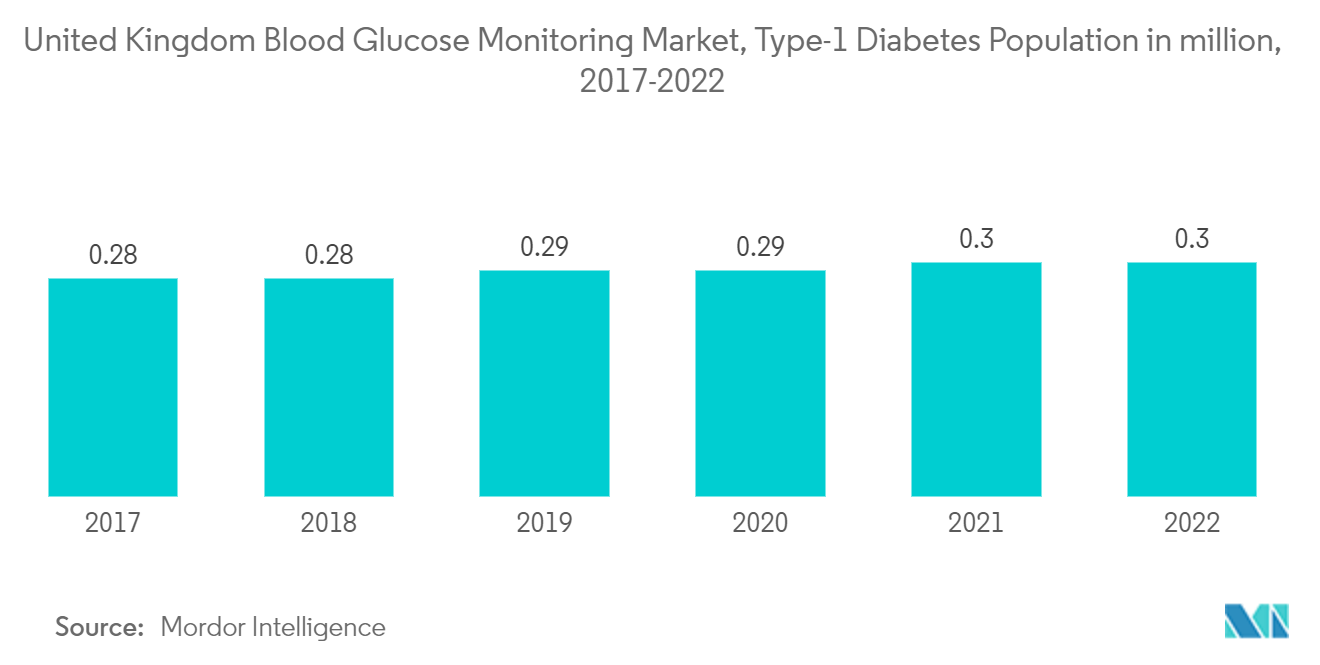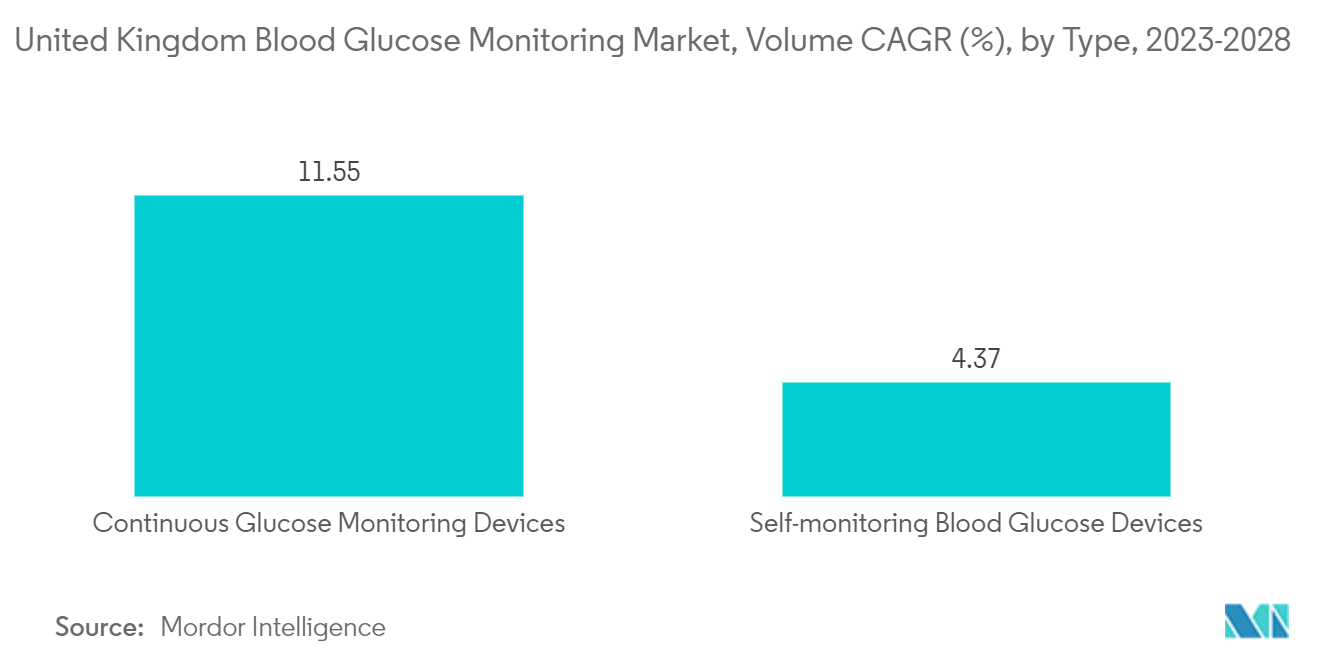Market Trends of United Kingdom Blood Glucose Monitoring Industry
Growing Diabetes Population in the United Kingdom
The United Kingdom's diabetes population is expected to grow, registering a CAGR greater than 2% over the forecast period.
In the United Kingdom, the prevalence of diabetes has increased dramatically during the last two decades, a fact driven by the increased prevalence of obesity and lifestyle changes. The country also has the highest obesity population, which is a prominent cause of type-2 diabetes.
According to the British Diabetic Association's Diabetes Prevalence, 2021 data shows an increase in the number of people living with a diabetes diagnosis in the United Kingdom increase of more than 150,000 from the previous year. It is estimated that more than 13.6 million people are at increased risk of type-2 diabetes in the United Kingdom. At this rate, the number of people with diabetes, including the undiagnosed population, is expected to rise to 5.5 million by 2030, as per IDF 2021 statistics.
The rapidly increasing incidence and prevalence of diabetic patients and healthcare expenditure are indications of market growth. Leading manufacturers are focusing on technological innovations and developing advanced products to gain a substantial market share. Technological innovations and advancements offer many conveniences for maintaining blood glucose levels. The vast range of apps in the diabetes field supports the adoption of lifestyle interventions for the prevention and management of diabetes, the evaluation of blood glucose control quality, and the dosing of insulin.
Integration of blood glucose monitoring with insulin calculators, automated insulin titration software, and remote coaching are further developments that provide patients with poorly controlled diabetes with the additional support needed to improve critical outcomes, thereby enhancing market prospects in the years to come.

The continuous glucose monitoring segment is expected to witness the highest growth rate over the forecast period
The continuous glucose monitoring segment is expected to register a CAGR of 11.8% over the forecast period.
Continuous glucose monitoring devices are automated glucose monitoring systems that consist of a small device that can be worn on the body and held on by an adhesive patch. The sensor part of the device has a cannula that is inserted into the top layer of skin and uses samples of interstitial fluid to check glucose levels. Sensors are connected to a transmitter that can send data wirelessly to a dedicated mobile receiving device or smartphone. Continuous glucose monitoring sensors use glucose oxidase to detect blood sugar levels. Sensors are the most important part of continuous glucose monitoring devices. Technological advancements to improve the accuracy of the sensors are expected to drive segment growth during the forecast period.
The use of CGMs by people with diabetes and their caregivers and communities is beneficial for managing their blood glucose and insulin levels and maintaining their health outcomes. CGM makes it significantly easier to manage blood glucose levels by decreasing interruptions, allowing for better sleep, and improving the mental health of patients or caregivers by reducing the overall mental load of managing diabetes. CGMs are widely used in children with type-1, enabling parents to feel safer by allowing other adults to care for their child, giving children more freedom and autonomy in their day-to-day lives, and enabling access to more normal experiences and opportunities.
The National Service Framework (NSF) program improves services by setting national standards to drive up service quality and tackle variations in care. The Association of British HealthTech Industries (ABHI) launched a diabetes section, enabling diabetes technology companies to work together in the first forum of its kind. The ABHI group is for any health technology company with an interest in diabetes care, from CGMs and insulin pumps to apps. Such advantages are likely to drive segment growth over the forecast period.


